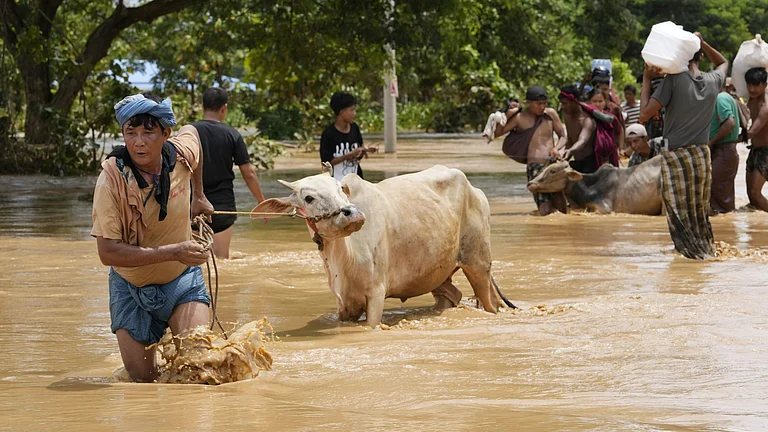Incessant rain caused floods and landslides in parts of Southeast Asia on Wednesday, where at least eight people have died in the aftermath of a tropical Storm Kajiki.
Tropical Storm Kajiki Kills Eight in Vietnam, Thailand
The rains were part of the aftermath of Tropical Storm Kajiki, which struck central Vietnam on Monday afternoon, forcing thousands to evacuate from high-risk areas.
Storm Kajiki made landfall in Vietnam on Monday afternoon, with winds of up to 118-133 km/h, battering the country's coastal provinces and forcing thousands to evacuate from high-risk areas.
Several parts of northern and central provinces of Vietnam were flooded, where seven people died, 34 injured and one missing, AP reported, as nearly 8 inches of rain fell overnight in regions of northeast Vietnam.
Flood warnings remained for some riverside areas. At least 6,00,000 people were evacuated from their homes in the coastal province of Ha Tinh. Central provinces of Thanh Hoa, Quang Tri, Hue and Da Nang were also ordered to evacuate, BBC reported.
Flights at two airports in its central region and some train services have also been suspended. Road travel too has been affected or suspended in the northern coastal province Ha Tinh.
One person was killed in Thailand and another went missing after a landslide on Wednesday Chiang Mai's northern area. The country’s Department of Disaster Prevention and Mitigation stated that many homes were damaged.
In the northern and northeastern regions, people living in the foothills and low-lying areas near waterways were warned about possible flash floods and landslides, by the Thailand's Meteorological Department.
According to Vietnamese authorities, Tropical storm Kajiki could be as powerful as Typhoon Yagi - its most powerful storm in 30 years - which killed 300 people when it hit in 2024.
Before reaching Vietnam, Kajiki had already unleashed heavy winds and rain across China’s southern Hainan Island.
A 2024 study warned that rising sea temperatures caused by climate change will drive Southeast Asia’s cyclones to form closer to shore, intensify more rapidly, and persist longer—heightening risks for coastal cities.

